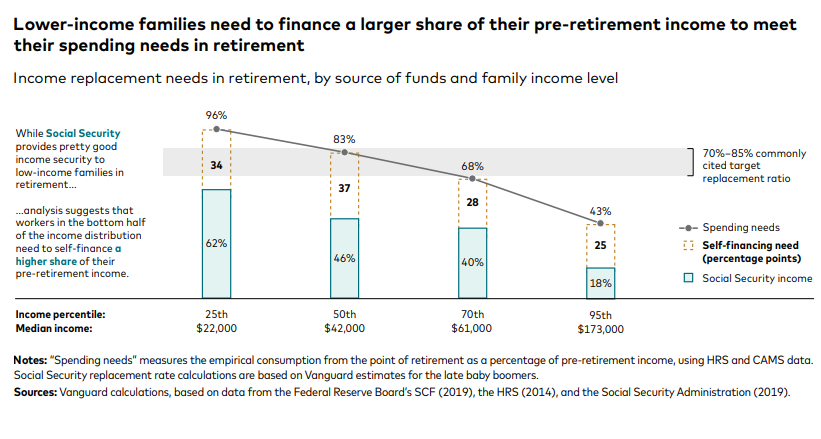Navigating Life Insurance: From Underwriting to Finding the Right Policy

Life insurance is a critical financial tool that provides security and peace of mind for you and your loved ones. In a world marked by uncertainties, having a well-structured life insurance policy will ensure that your family's financial needs are taken care of even when you're not around.
In this comprehensive guide, we'll delve into the intricacies of life insurance, including the underwriting process and factors to consider when choosing the right policy. We'll also debunk the notion of "buy term and invest the rest" and shed light on why this philosophy might not be the best approach.
What Is Life Insurance?
The process of purchasing life insurance essentially involves transferring risk from you to an insurance company. You're passing off the risk of your life, income, and the financial well-being of your loved ones being impacted by your death, critical injury, terminal illness, or chronic illness to the insurance company. In return, if the unfortunate event covered by your policy occurs, the insurance company steps in to provide financial compensation as agreed upon in your policy. This financial safety net ensures that your family's financial future remains secure even if you're no longer there to provide for them.
Understanding Life Insurance Underwriting:
Life insurance underwriting plays a pivotal role in this process. It is the mechanism by which insurers assess your risk profile to determine your eligibility for coverage and calculate the corresponding premium rates. The central principle at play here is that the higher the risk of a triggering event occurring, the higher your insurance premiums will be.
Over the years, the landscape of life insurance underwriting has evolved significantly. Insurers now have access to a wealth of data and tools that enable them to make more informed decisions about an applicant's risk profile. These advancements have paved the way for a more accurate assessment of risk, leading to personalized premium calculations based on individual circumstances.
Digitalization and Technology-Driven Data Analysis:
One of the most notable shifts in life insurance underwriting is the embrace of digitalization and technology-driven data analysis. In the past, the underwriting process relied heavily on manual assessments and limited data sources. Today, insurers have harnessed the power of technology to streamline and enhance this process.
Here's how digitalization and technology-driven data analysis are transforming life insurance underwriting:
- Access to Rich Data Sources: Insurers now have access to a broader range of data sources that were previously untapped. This includes credit histories, payment records, driving records, and more. By leveraging this additional information, insurers gain a more comprehensive view of an applicant's risk profile.
- Efficient Application Processing: Digitalization allows for quicker responses to insurance applications. Online platforms have simplified the application process, making it more convenient for applicants while reducing processing times.
- Personalized Premiums: With a more precise understanding of an applicant's risk, insurers can calculate premiums tailored to individual circumstances. This means that those with lower risk profiles may receive more favorable rates, while those with higher risks may see slightly higher premiums.
Types of Underwriting and How Each Is Assessed:
Life insurance underwriting comes in several forms, each designed to accommodate varying degrees of risk and applicant profiles. Here are the main types of underwriting:
- Full Medical Underwriting: This is the most comprehensive form of underwriting. Applicants are required to undergo a thorough medical examination, which often includes blood tests, urine tests, and sometimes even EKGs. Insurers assess all aspects of an applicant's health, lifestyle, and medical history to determine eligibility and premium rates. This type of underwriting generally results in lower premiums for individuals in good health.
- Express Medical Underwriting: This approach streamlines the underwriting process. Applicants provide some medical information but typically do not undergo a full medical examination. It's a faster option for healthy applicants, of something is found warranting further investigation the process may switch to full medical.
- Simplified Issue Underwriting: This type of underwriting involves a simplified application process with fewer medical questions. While it's quicker and more convenient, it's often associated with higher premiums due to the limited medical information collected.
- Guaranteed Issue Underwriting: This form of underwriting requires no medical examination or detailed medical questions. Almost anyone can secure coverage, but it tends to be more expensive, and coverage amounts are typically lower.
Debunking the "Buy Term and Invest the Rest" Philosophy:
The "buy term and invest the rest" philosophy has gained popularity as a cost-effective alternative to traditional life insurance policies. However, let's dissect why this approach might not be as foolproof as it seems:
- The Investment Myth: Proponents of this philosophy assume individuals will invest the difference between term and permanent life insurance premiums. However, studies show that few actually follow through with consistent investments, putting financial goals at risk and leaving them without coverage or savings for self insurance at the time when insurance is most needed.
- Risks as You Age: As the term policy ends, individuals may find themselves uninsurable or facing significantly higher premium costs due to aging or health changes. This can leave them vulnerable without coverage during a crucial time.
- Mortgage and Retirement Gaps: Many who adopt this philosophy might not save adequately for their mortgage or retirement. When one spouse passes away, the surviving partner could face financial difficulties due to the lack of replacement income.
Crafting a Comprehensive Life Insurance Strategy:
To ensure your life insurance strategy aligns with your financial goals, consider the following steps:
- Define Your Objectives: Clearly outline what you want your life insurance to achieve. Whether it's covering funeral expenses, paying off debts, or providing income replacement, understanding your goals guides your policy selection.
- Account for Pre-existing Conditions: If you have pre-existing medical conditions, navigate the underwriting process transparently. Failing to do so can lead to higher premiums or coverage denials later.
- Duration of Coverage: Determine how long you'll need coverage. Consider factors like mortgage payoff, education expenses, and retirement timing to tailor your policy's term.
- Compare Multiple Quotes: Shop around and compare quotes from different insurers. Working with an independent insurance broker makes this process convenient and efficient as they will do the shopping around and comparison legwork for you.
- Consider Conversion Options: If you do choose to go with a term policy, choose one with conversion options, allowing you to switch to permanent coverage if your needs change.
- Financial Stability of Insurers: Ensure you choose a financially stable insurer by checking their ratings from reputable organizations.
- Renewal and Cancellation Terms: Understand renewal options and cancellation policies. Look for policies that offer flexibility and transparent terms.
- Work with a Trusted Broker: Developing a rapport with a reliable independent insurance broker ensures you receive accurate information and make informed decisions.
Conclusion:
Life insurance is a cornerstone of financial planning, providing protection and security to your loved ones. While the "buy term and invest the rest" philosophy might seem appealing, its potential pitfalls make it a less reliable strategy. By following a comprehensive approach to life insurance, understanding the underwriting process, and working with trusted professionals, you can craft a policy that safeguards your family's future and financial well-being.






